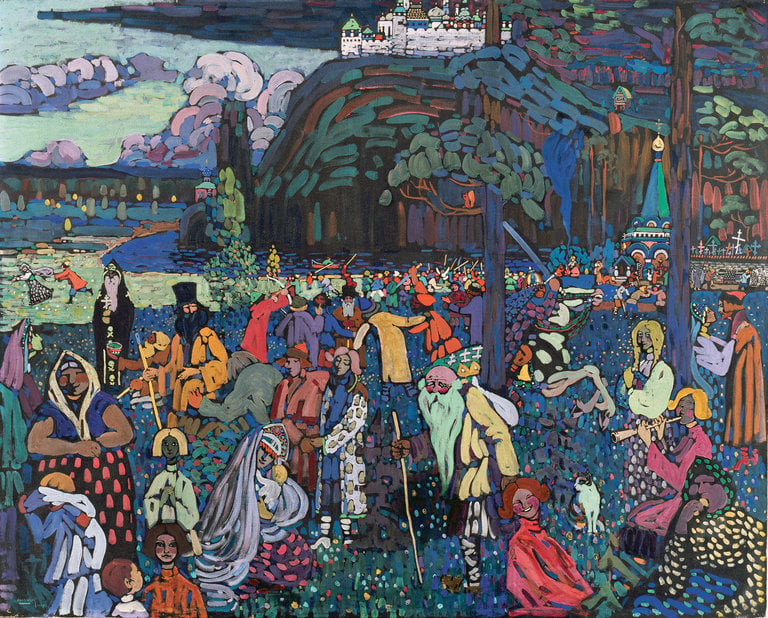
A lawsuit filed Friday, March 3, in Federal District Court in Manhattan claims that a 1907 painting by Wassily Kandinsky, Das Bunte Leben (The Colorful Life), was stolen from a Jewish family during World War II, and asks for its return to the legal heirs.
While the painting currently hangs in the Lenbachhaus in Munich, where it has hung for the past four decades, it belongs to the Munich-based Bavarian State Bank, or BayernLB.
But the painting once belonged to the Lewenstein family. It was bought by Emanuel Albert Lewenstein, a Jewish sewing machine manufacturer from Amsterdam, who died in 1930. His children, Robert Gotschalk Lewenstein and Wilhelmine Helena Lewenstein, gave the painting to the Stedelijk Museum for safekeeping before fleeing the Netherlands to the South of France and Mozambique, respectively.
Shortly after the Nazis invaded the Netherlands in May 1940, the complaint states, Das Bunte Leben fell into the hands of a Dutch art collector, without permission of the owners. It was bought in October of that year at auction by a man named S.B.S. Slijper, and BayernLB bought it from Slijper’s widow in 1972. The city and the Lenbachhaus encouraged the purchase.
James Palmer, the founder of the Mondex Corporation which specializes in the recovery of art and other assets looted during World War II, and is currently working on the Lewenstein case.
Palmer said that, in an initial conversation with BayernLB in the Summer of 2016, the bank agreed to go before the Limbach Commission, the German commission that handles restitution disputes, on the condition that the painting remain in the museum, even if the commission decides in favor of the heirs.
“They basically told us to ‘Fuck off,’” Palmer told Der Spiegel.
A spokesman for the bank, Matthias Lücke, however, emphasized to the New York Times the importance of keeping the painting in the public domain.
Now, the dispute will be handled in court. No matter the outcome, BayernLB wishes that the painting remain hanging in the Munich museum, which holds the largest European collection of Kandinsky works.